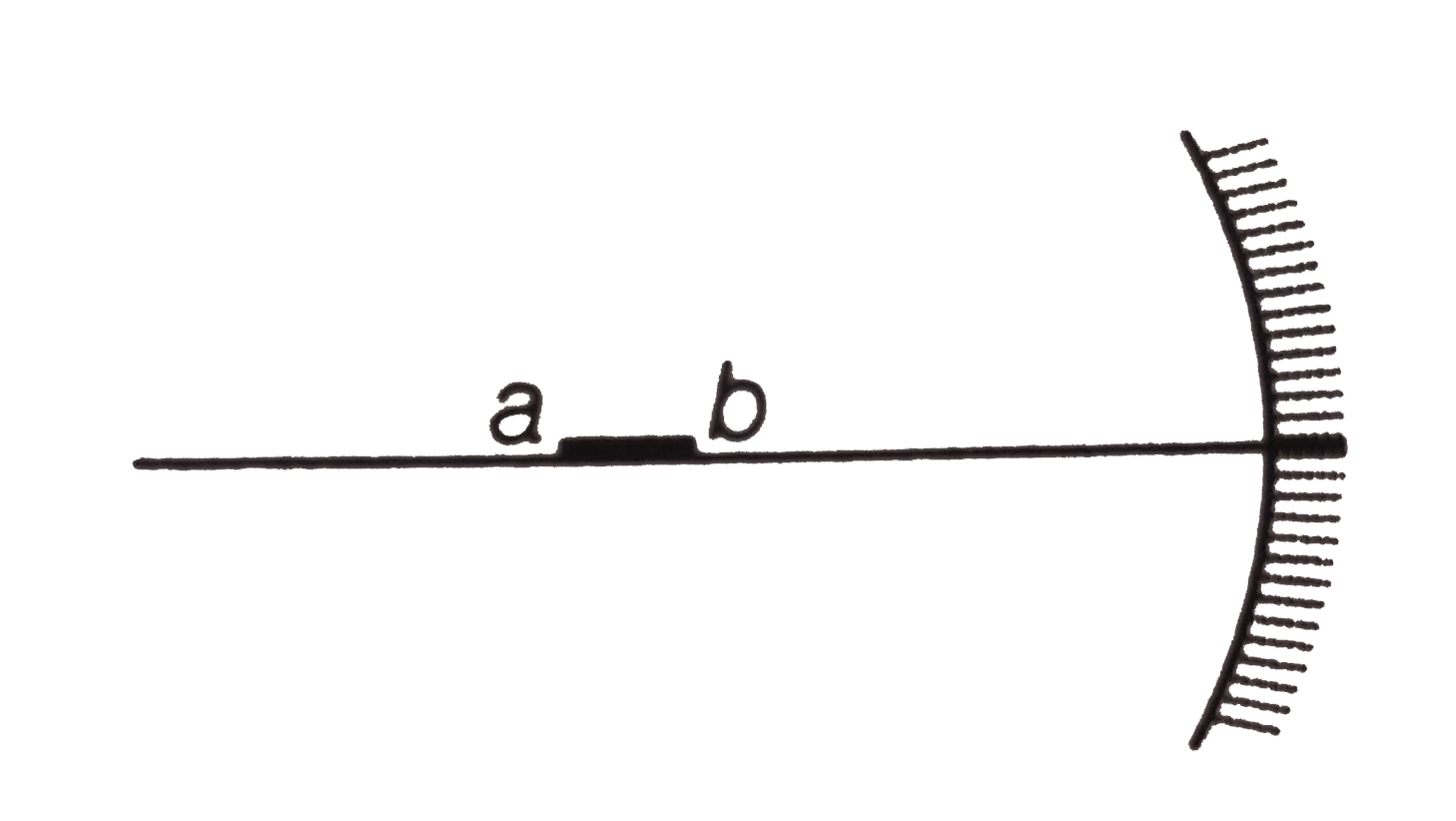An object of height 20 cm is kept at a distance of 48 cm in front of a concave mirror of focal length 12 cm. If the mirror forms a virtual, diminished image of the object then calculate the magnification
To solve the problem step by step, we will follow the principles of optics related to concave mirrors and magnification.
Step 1: Identify the given values
- Height of the object (h) = 20 cm
- Distance of the object from the mirror (u) = -48 cm (negative sign indicates the object is in front of the mirror)
- Focal length of the concave mirror (f) = -12 cm (negative sign indicates it is a concave mirror)
Step 2: Use the mirror formula
The mirror formula is given by:
1f=1v+1u
Where:
- f = focal length
- v = distance of the image from the mirror
- u = distance of the object from the mirror
Step 3: Substitute the known values into the mirror formula
Substituting the values we have:
1−12=1v+1−48
Step 4: Rearrange the equation to solve for 1v
Rearranging gives:
1v=1−12+148
Step 5: Find a common denominator and simplify
The common denominator for -12 and 48 is 48. Therefore:
1−12=−448
Now substituting this back into the equation:
1v=−448+148=−4+148=−348
Step 6: Solve for v
Taking the reciprocal gives:
v=48−3=−16 cm
This negative sign indicates that the image is virtual and located on the same side as the object.
Step 7: Calculate the magnification (m)
The magnification formula is given by:
m=−vu
Substituting the values we have:
m=−−16−48=1648=13
Step 8: Conclusion
The magnification of the image is 13. This indicates that the image is diminished.
- Height of the object (h) = 20 cm
- Distance of the object from the mirror (u) = -48 cm (negative sign indicates the object is in front of the mirror)
- Focal length of the concave mirror (f) = -12 cm (negative sign indicates it is a concave mirror)
The mirror formula is given by:
1f=1v+1u
Where:
- f = focal length
- v = distance of the image from the mirror
- u = distance of the object from the mirror
Substituting the values we have:
1−12=1v+1−48
Rearranging gives:
1v=1−12+148
The common denominator for -12 and 48 is 48. Therefore:
1−12=−448
Now substituting this back into the equation:
1v=−448+148=−4+148=−348
Taking the reciprocal gives:
v=48−3=−16 cm
This negative sign indicates that the image is virtual and located on the same side as the object.
The magnification formula is given by:
m=−vu
Substituting the values we have:
m=−−16−48=1648=13
The magnification of the image is 13. This indicates that the image is diminished.
Topper's Solved these Questions
- BOOK - ICSECHAPTER - LIGHTEXERCISE - TOPIC 2 Spherical Mirrors (4 Marks Questions )9videos
LIGHT
- BOOK - ICSECHAPTER - LIGHTEXERCISE - TOPIC 2 Spherical Mirrors (2 Marks Questions )22videos
LIGHT
- BOOK - ICSECHAPTER - LAWS OF MOTIONEXERCISE - EXERCISE - 3(E) (Numericals)31videos
LAWS OF MOTION
- BOOK - ICSECHAPTER - MAGNETISM EXERCISE - EXERCISE-10(B) (Multiple Choice Type)2videos
MAGNETISM
Similar Questions
An object of height 20 cm is kept at a distance of 48 cm in front of a concave mirror of focal length 12 cm. If the mirror forms a virtual, diminished image of the object then calculate the distance of the image from the mirror.
View SolutionAn object of height 2 cm is placed at a distance 20cm in front of a concave mirror of focal length 12 cm. Find the position, size and nature of the image
View SolutionA point object is placed at distance of 30 cm in front of a convex mirror of Focal length 30 cm. The image will form at
View Solution
A small object ab of size 1mm is kept at a distance of 40 cm form a concave mirror of focal length 30 cm. Make image of this object.View SolutionAn object is placed 40 cm from a concave mirror of focal length 20 cm. The image formed is
View SolutionAn object is placed at a distance of 20 cm from a concave mirror of focal lenght 10 cm. What is the image distance?
View SolutionAn object is placed at a distance of 48 cm in front of a concave mirror of focal length 24 cm.
a. Find the position of image.
b. What will be the nature of image?View SolutionAn object is placed at 6 cm distance in front of a concave mirror of focal length 4 cm.
Find the position of the image period.View SolutionAn object is placed at a distance 20 cm from the pole of a convex mirror of focal length 20 cm. The image is produced at
View SolutionAn object is placed at 6 cm distance in front of a concave mirror of focal length 4 cm.
What will be the nature of the image?View Solution

